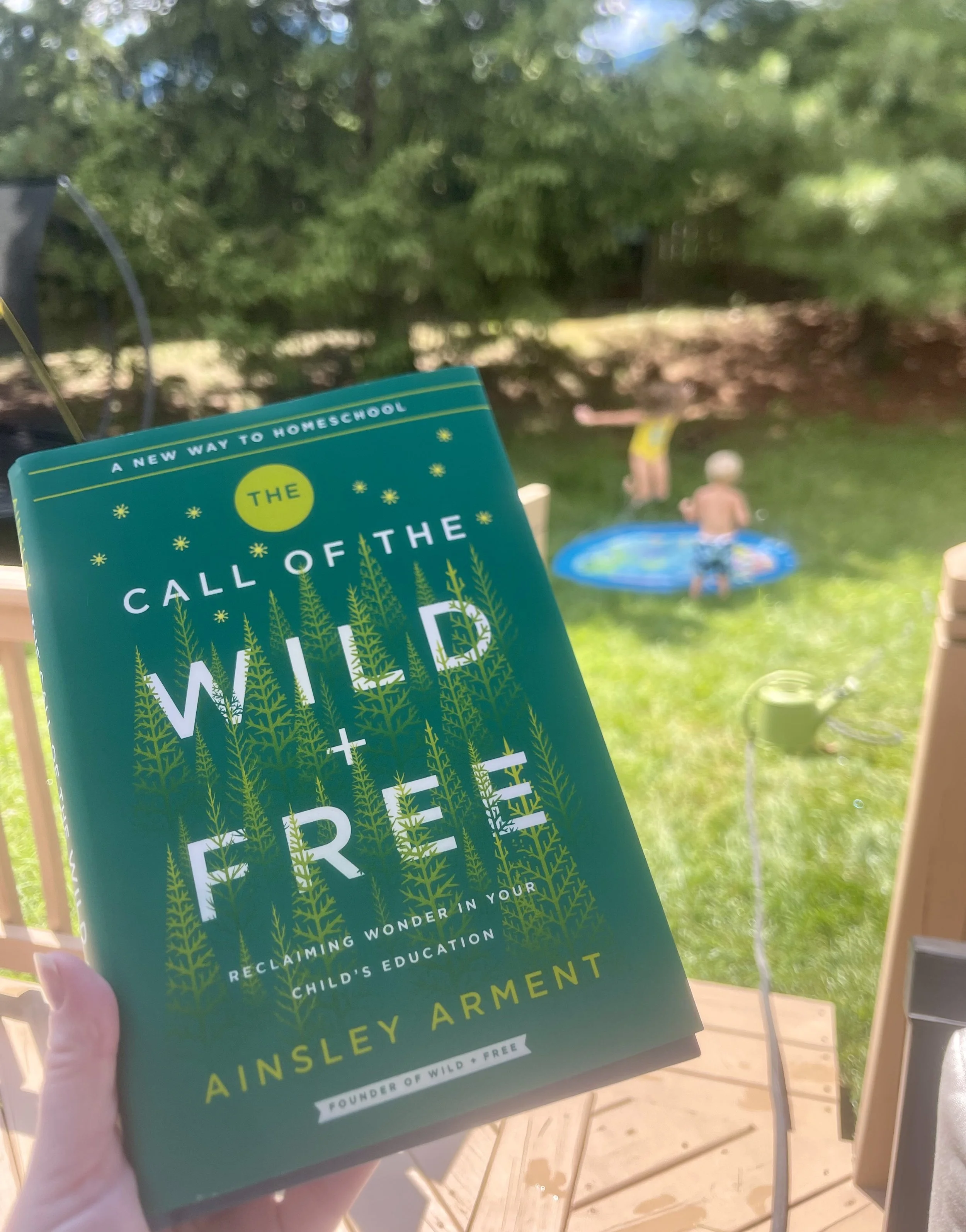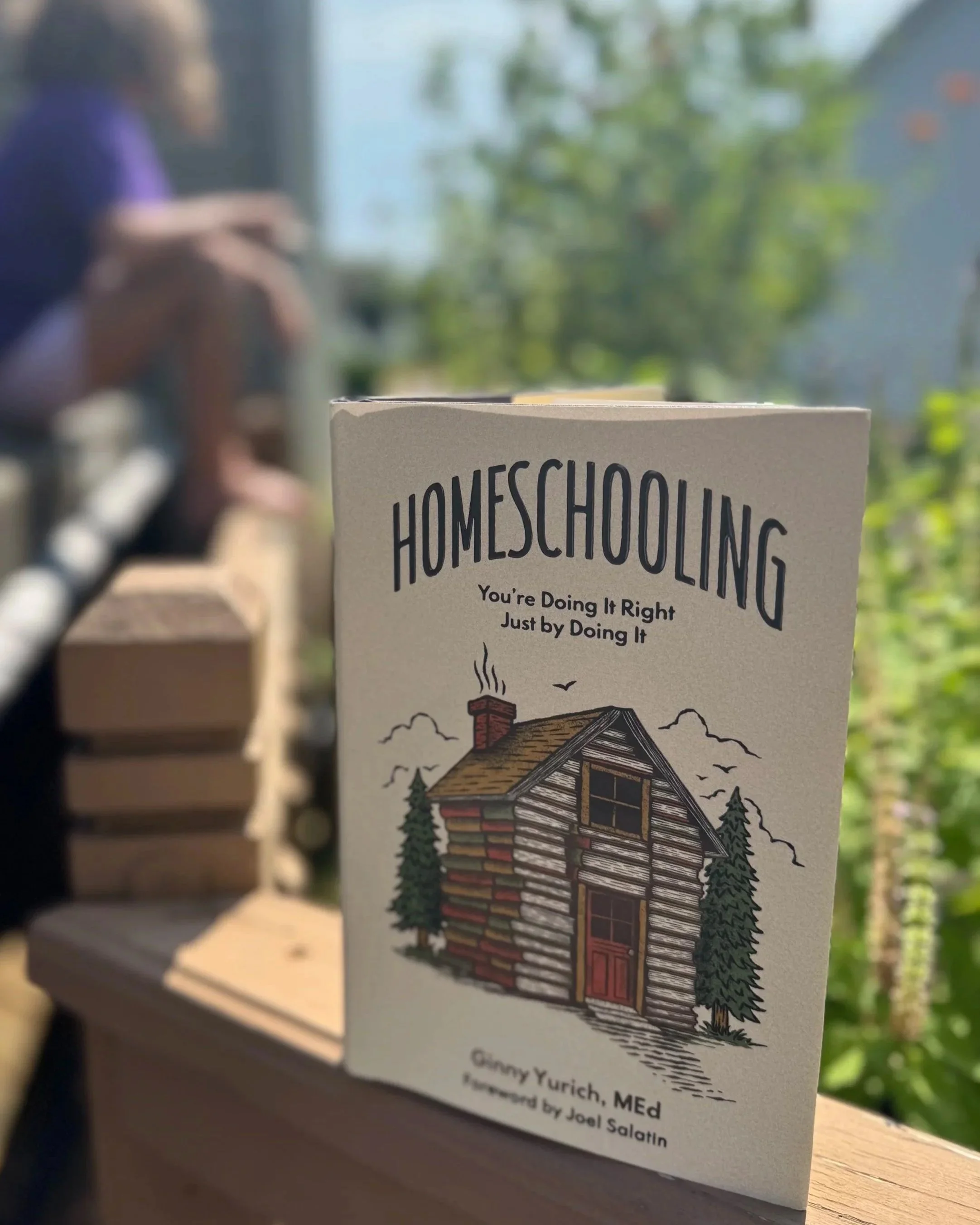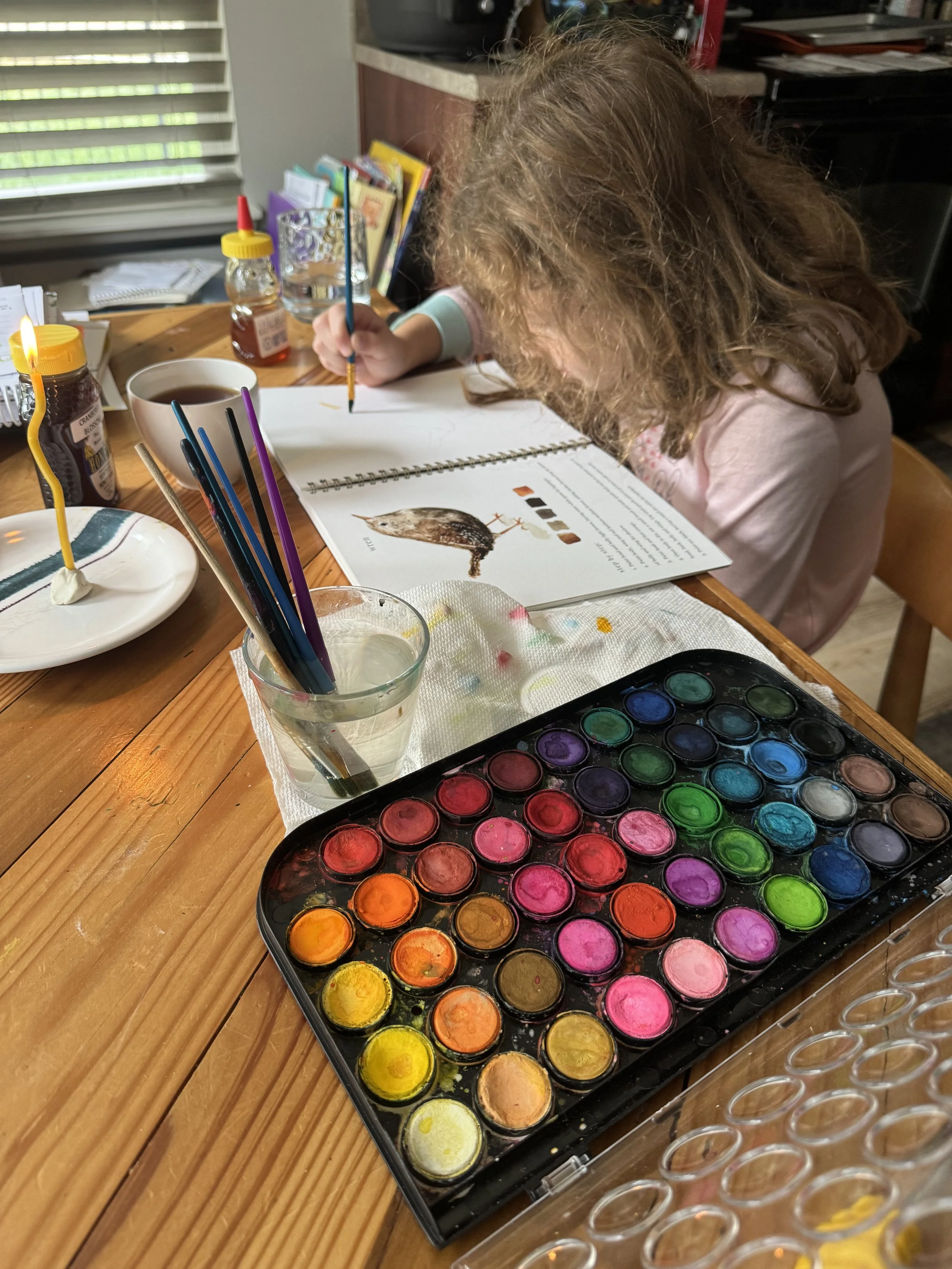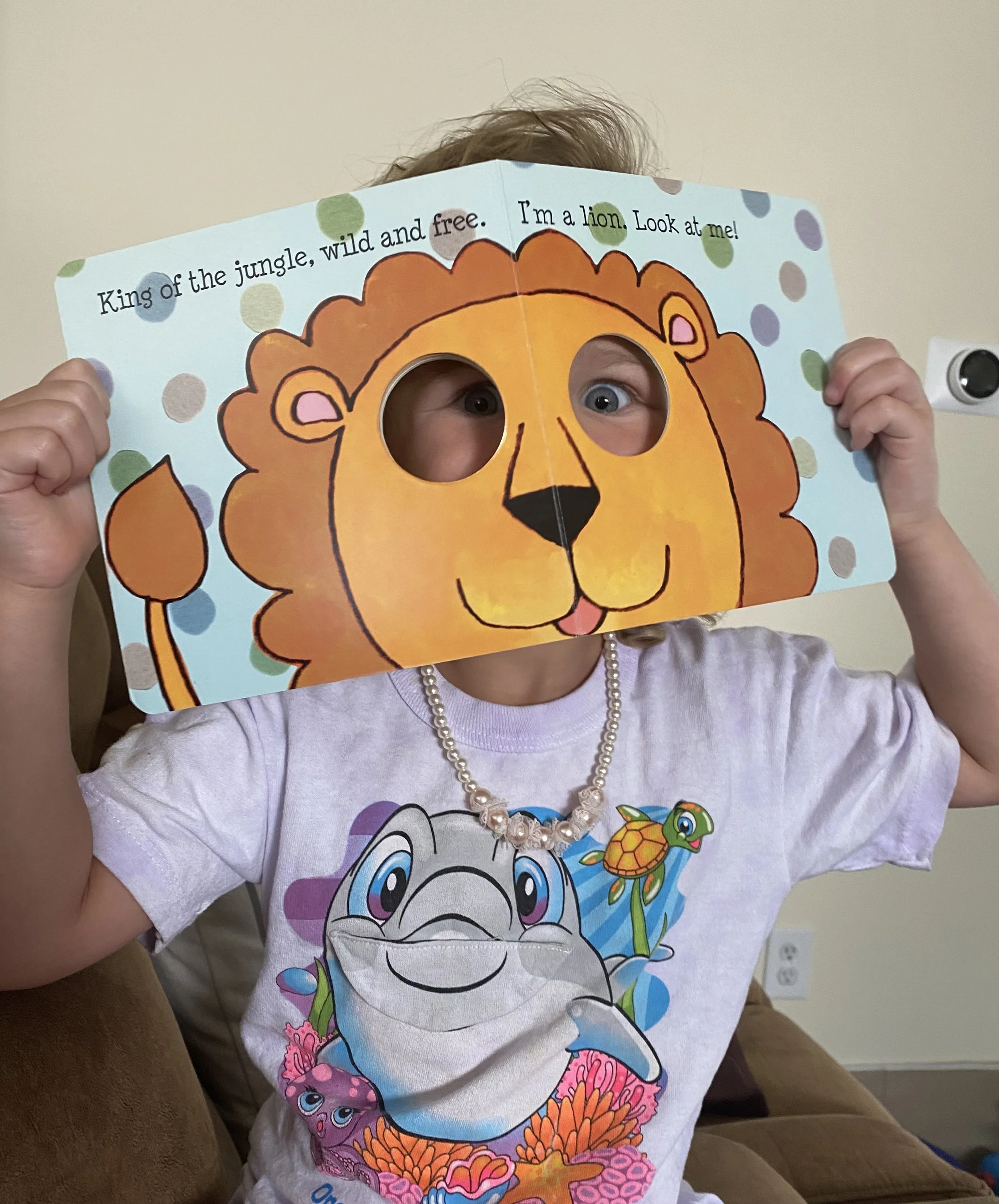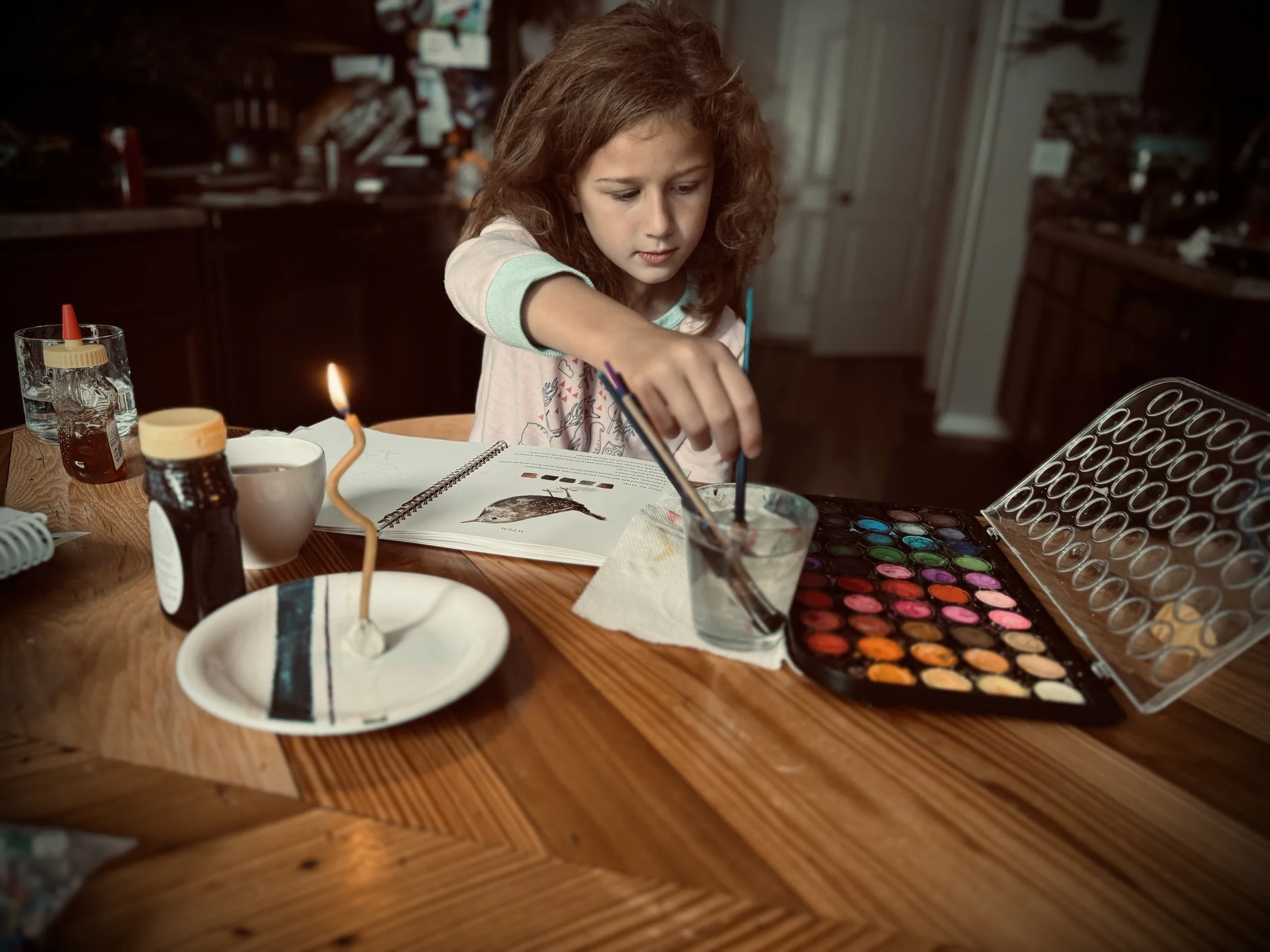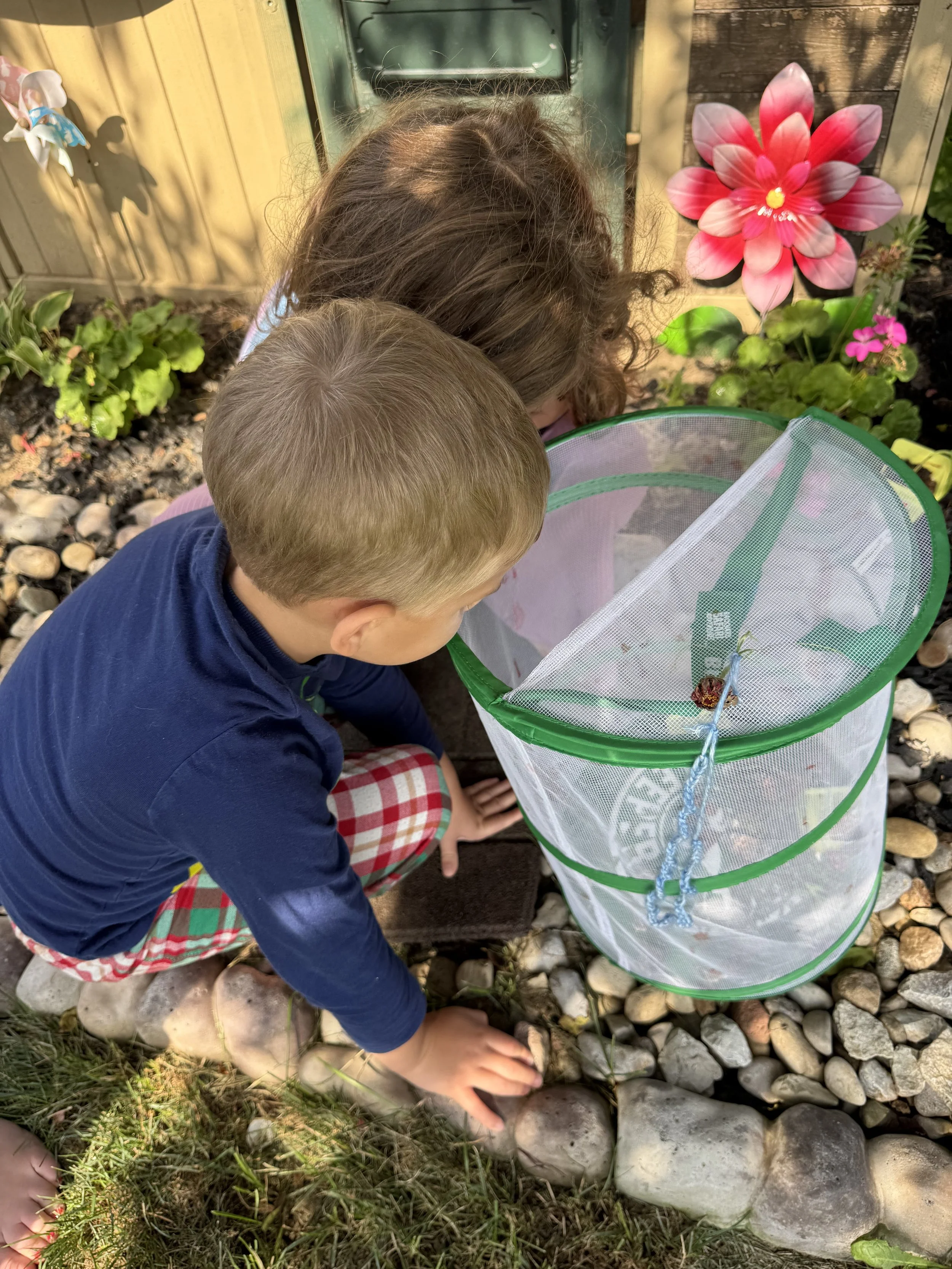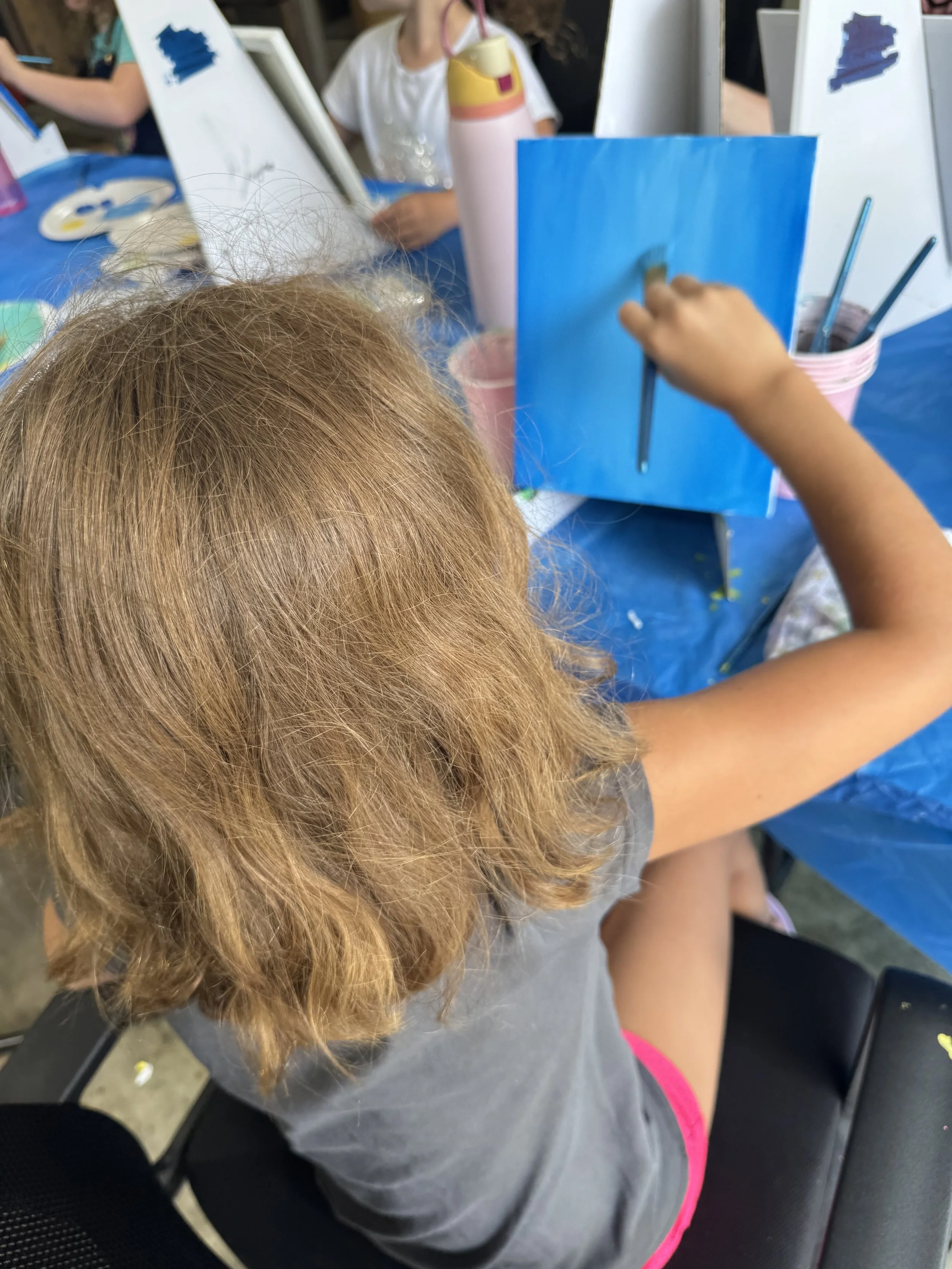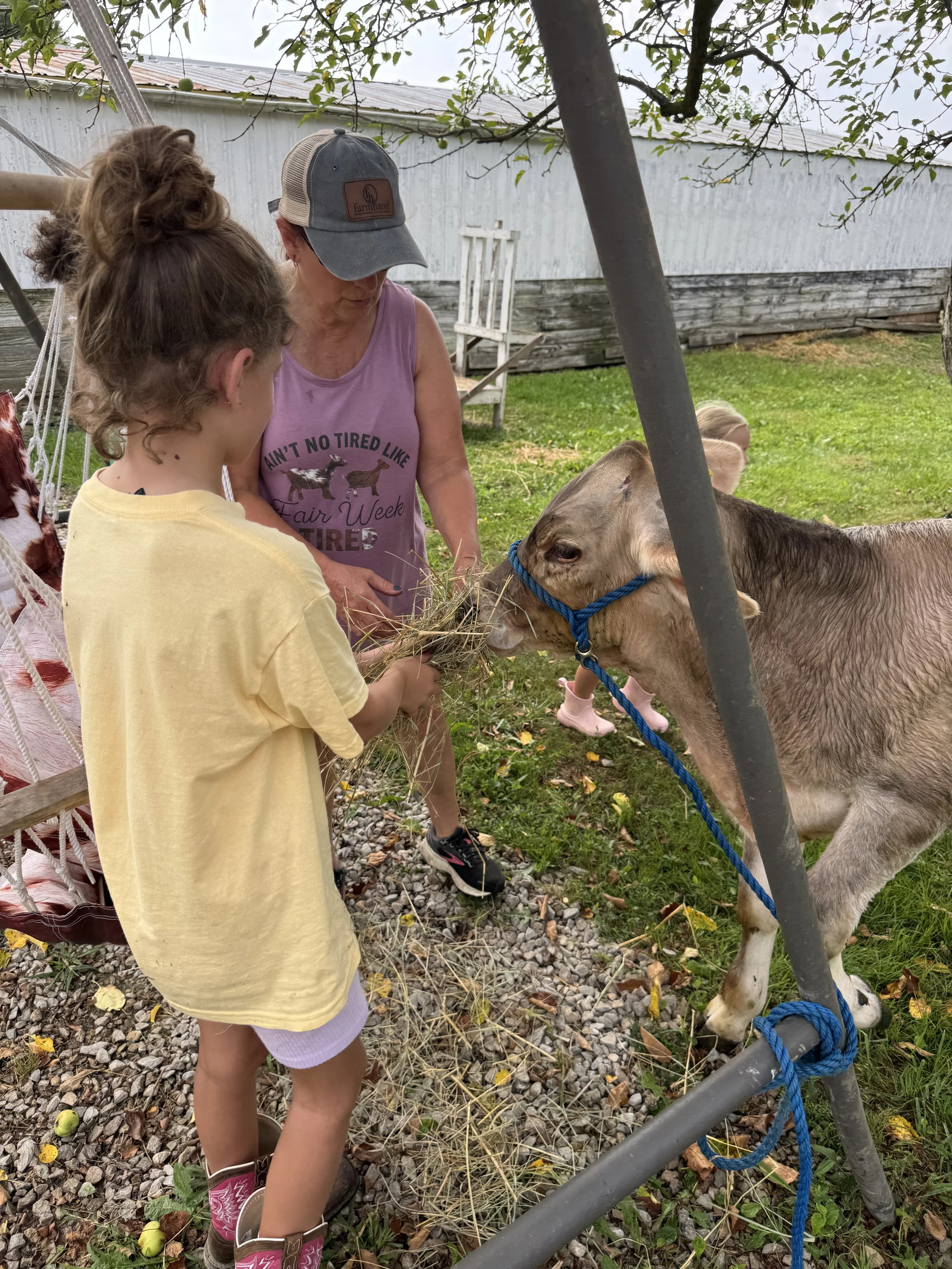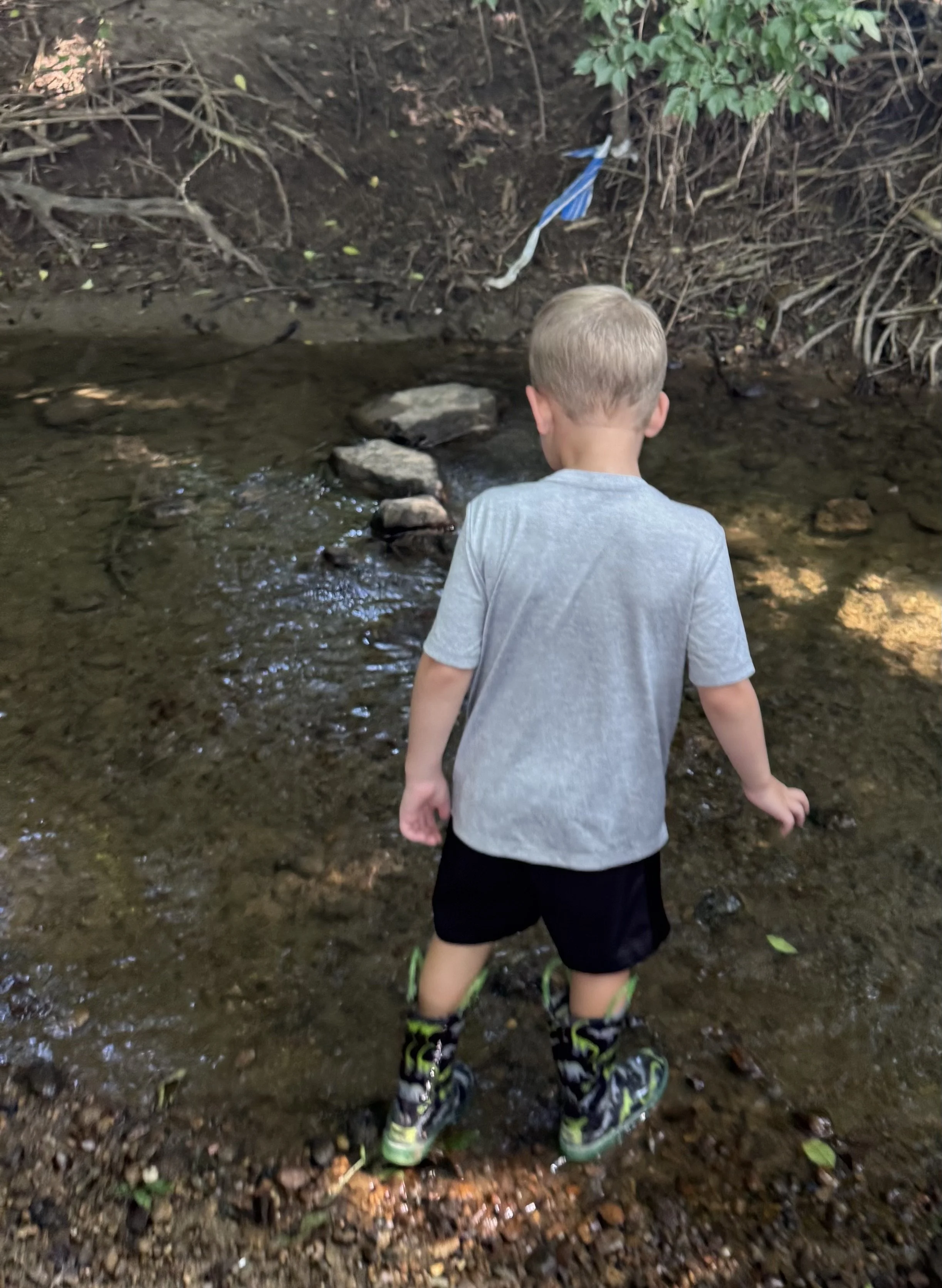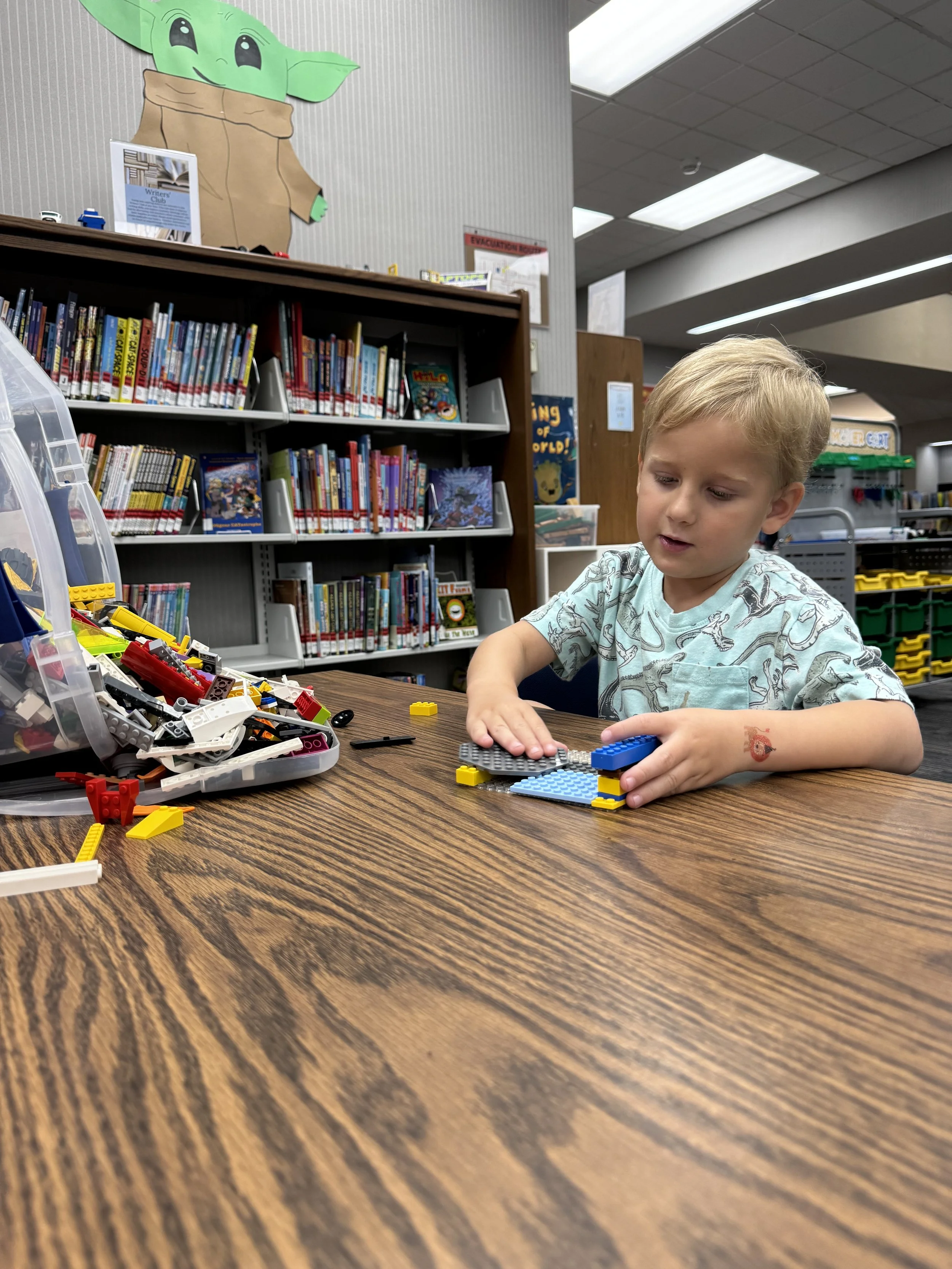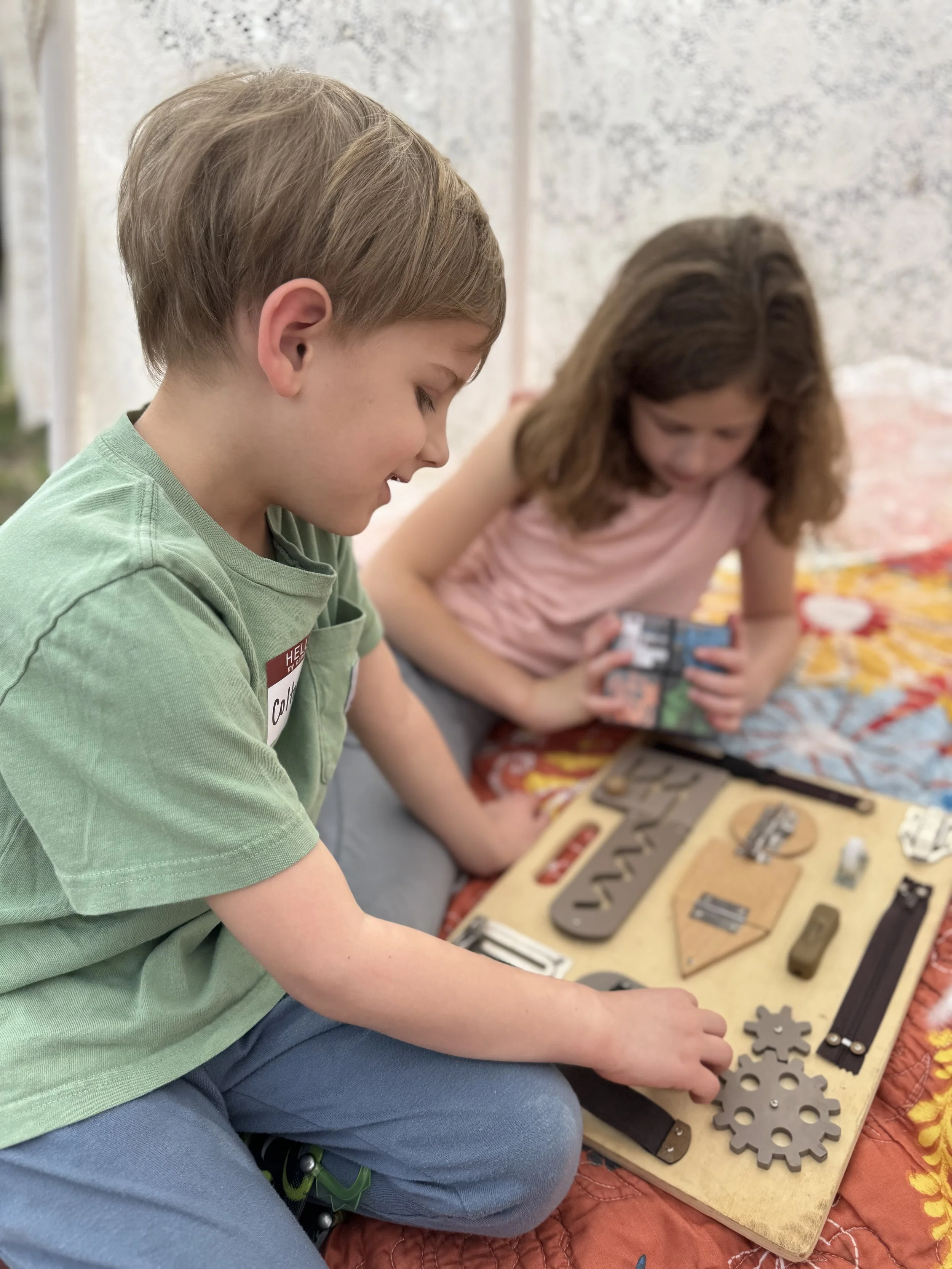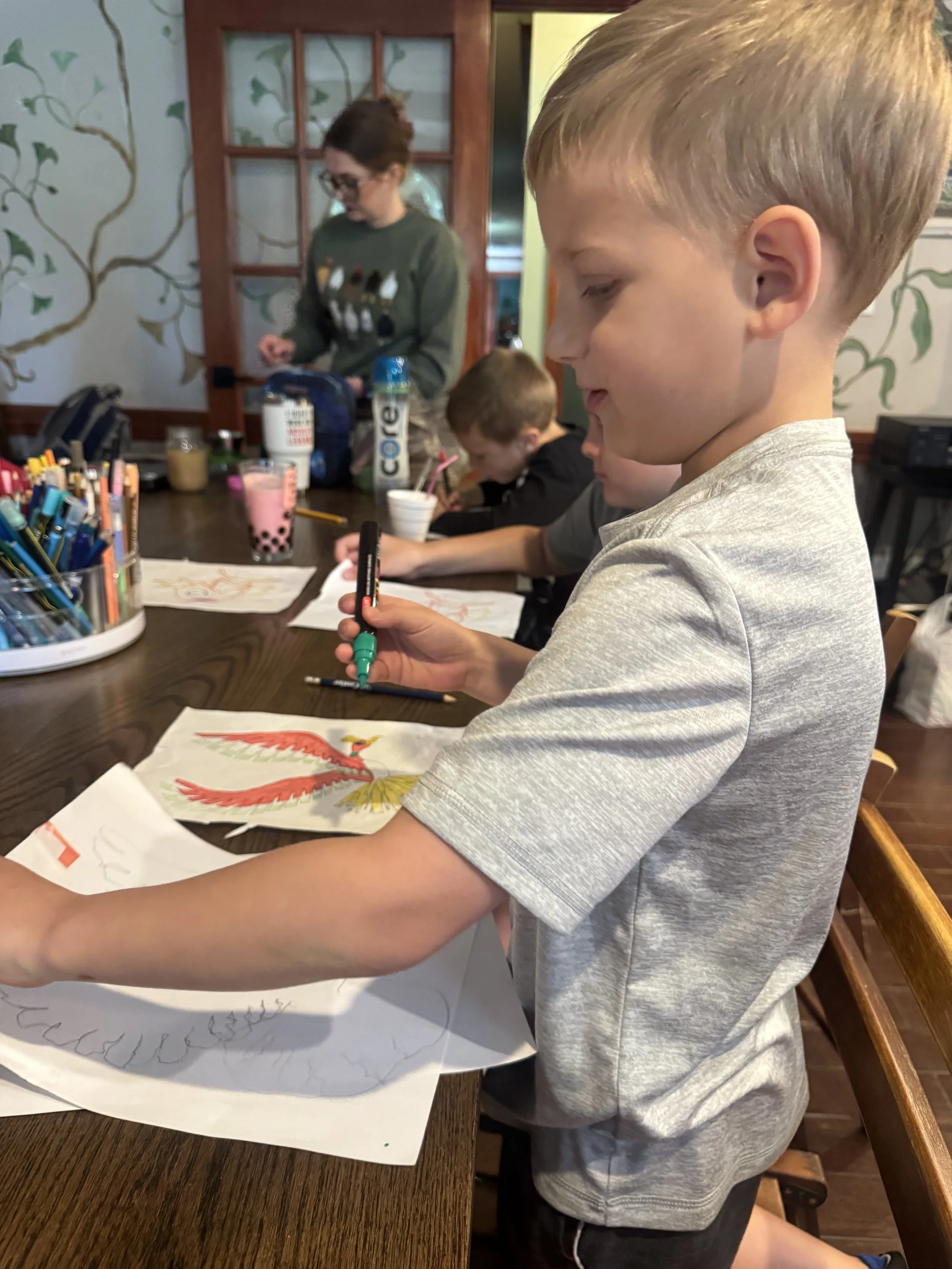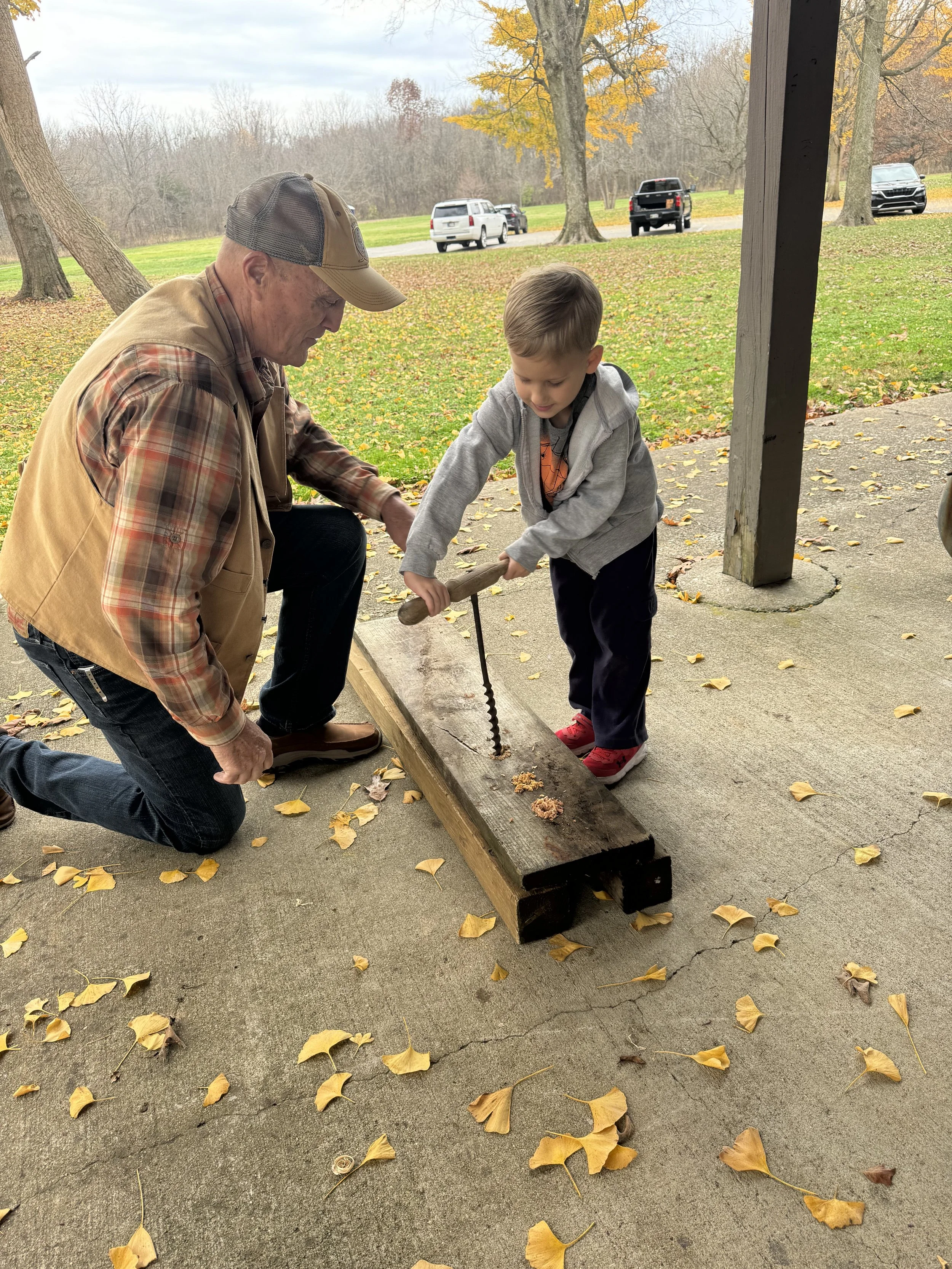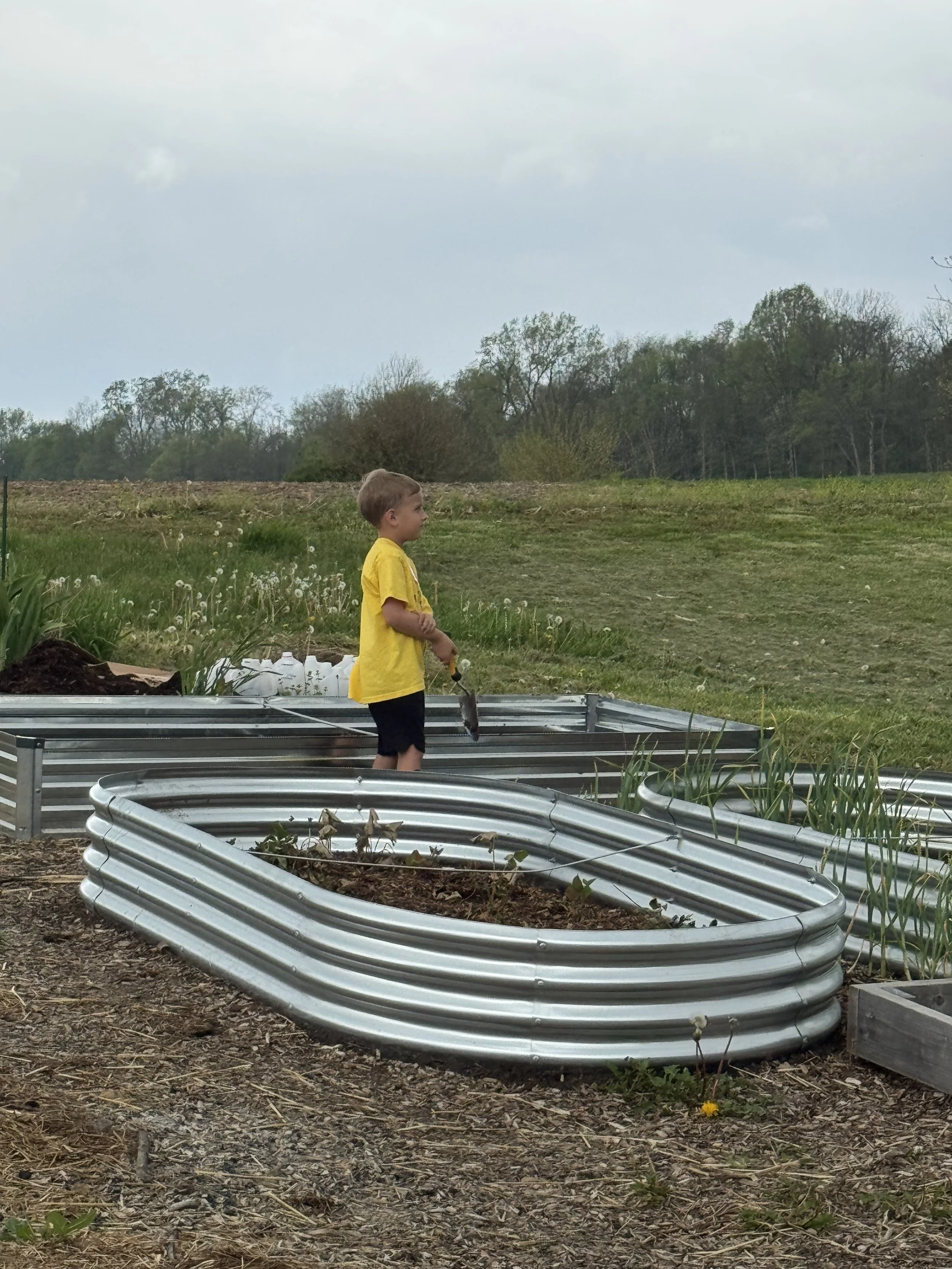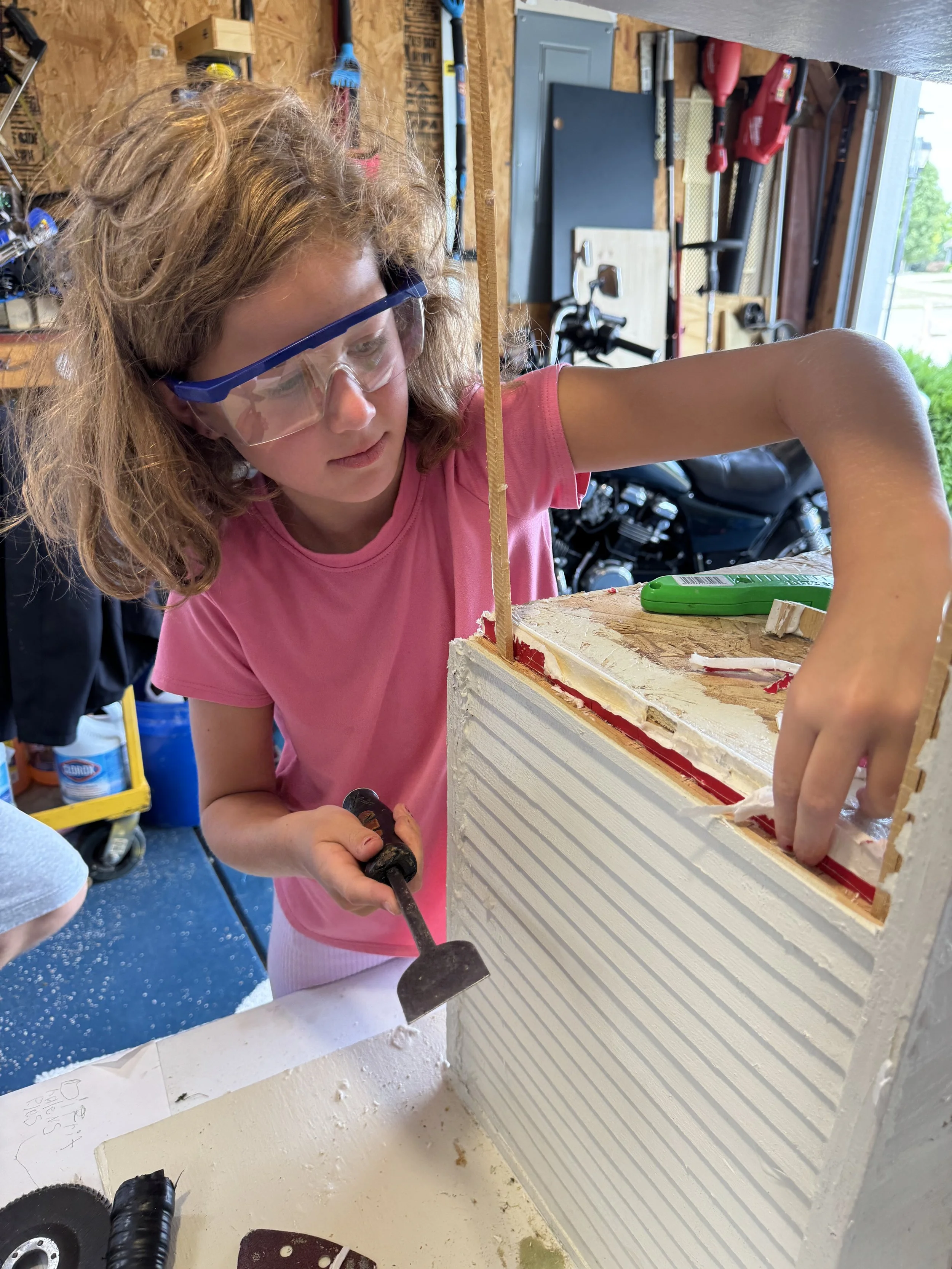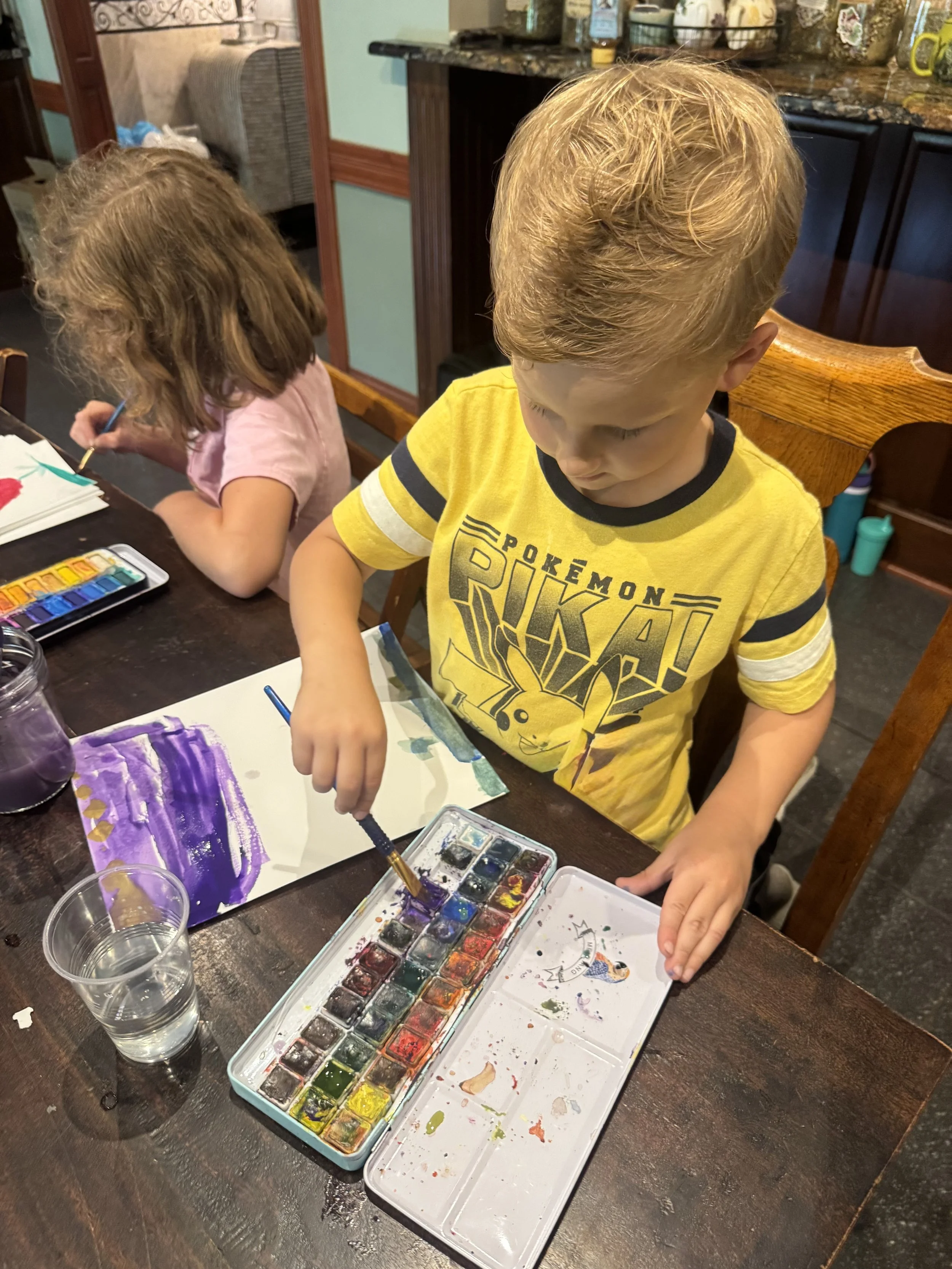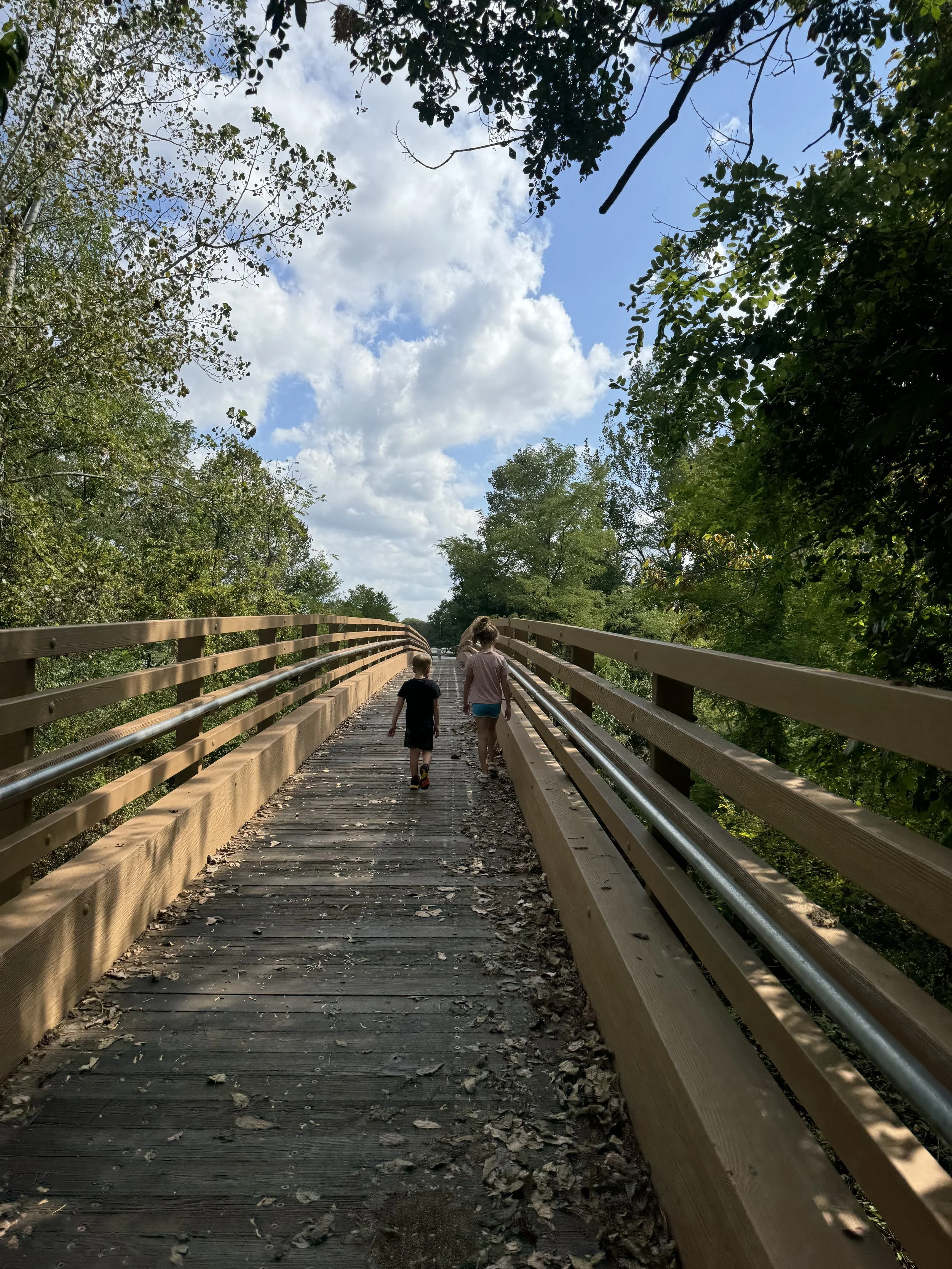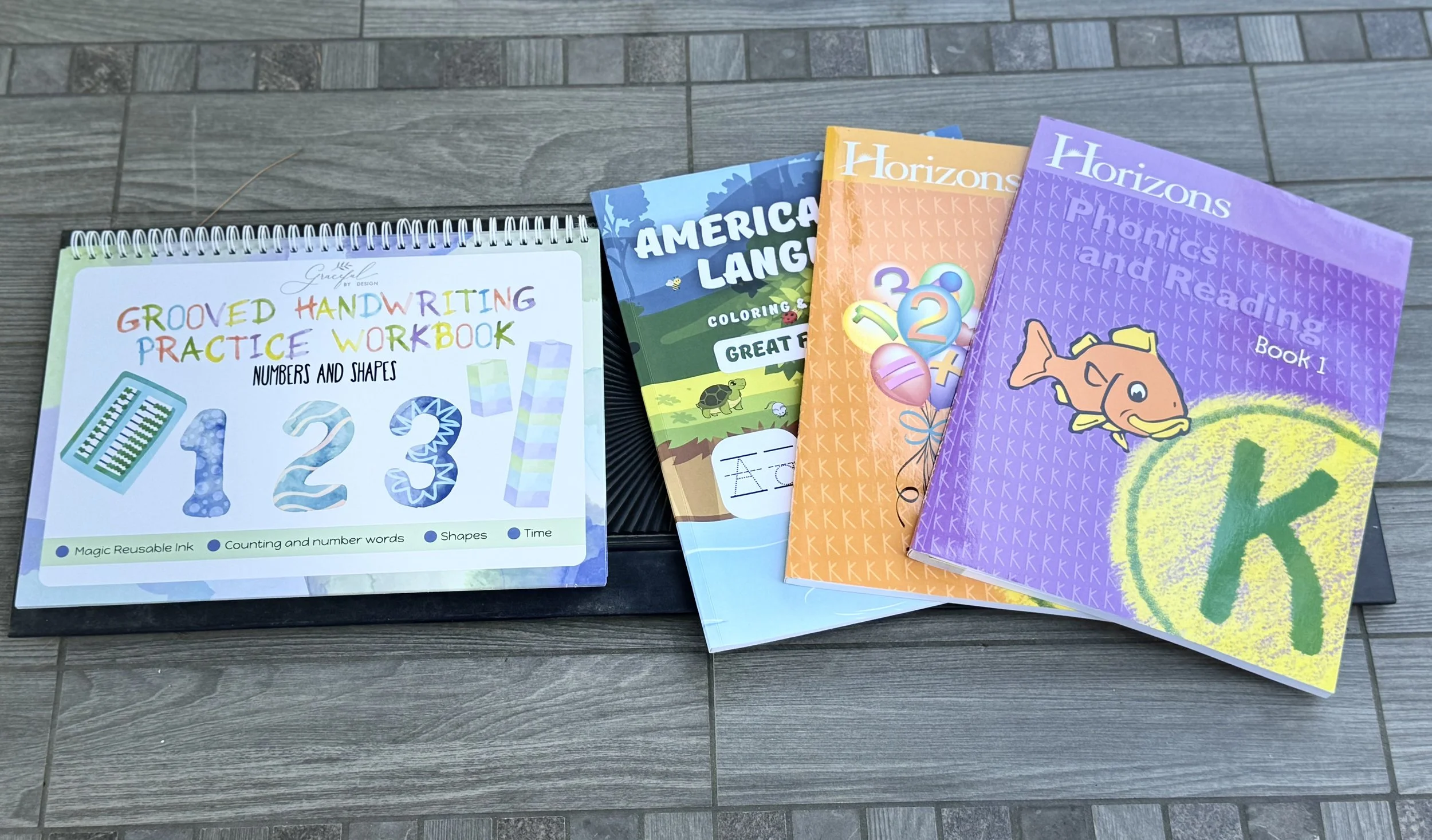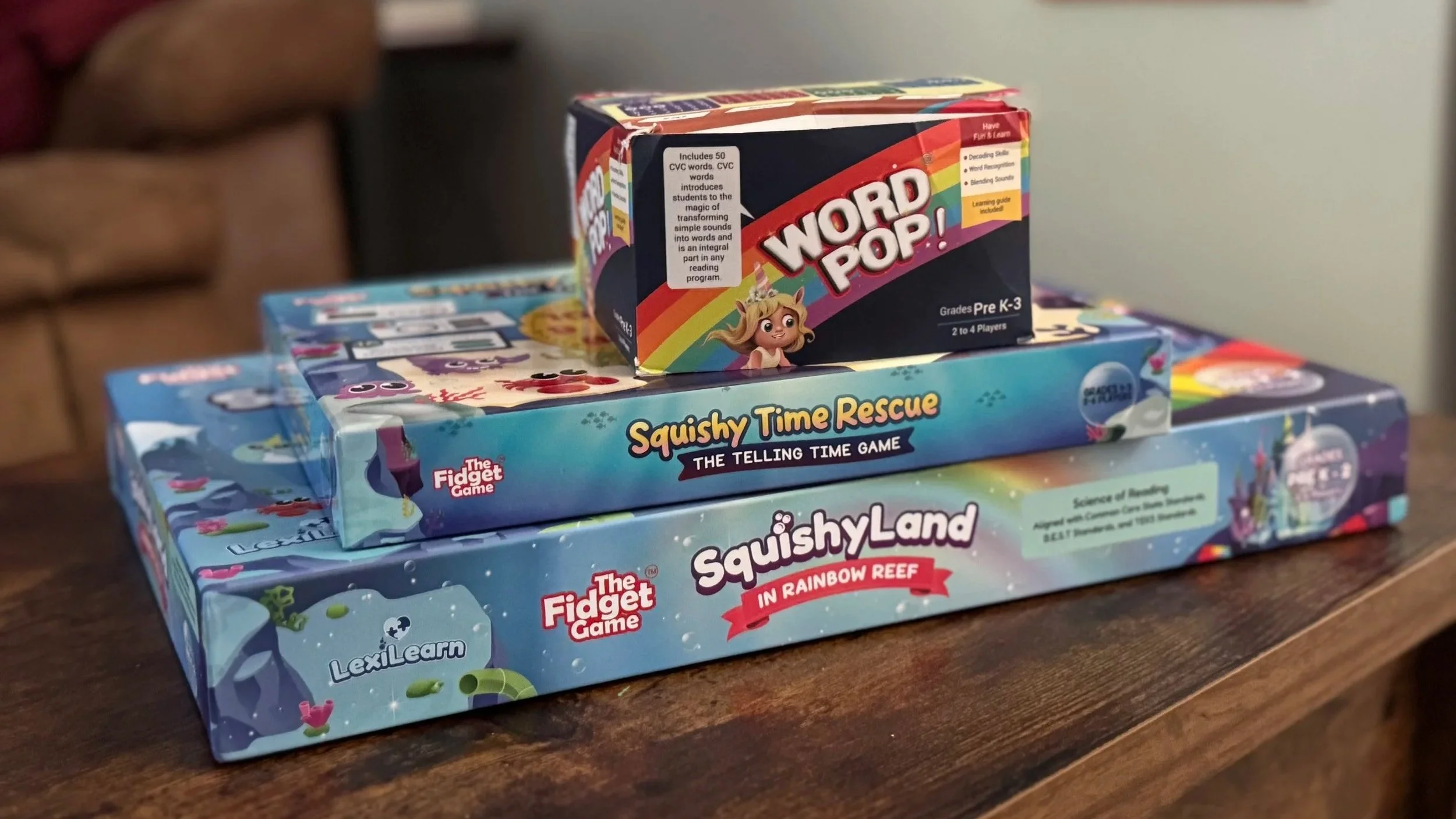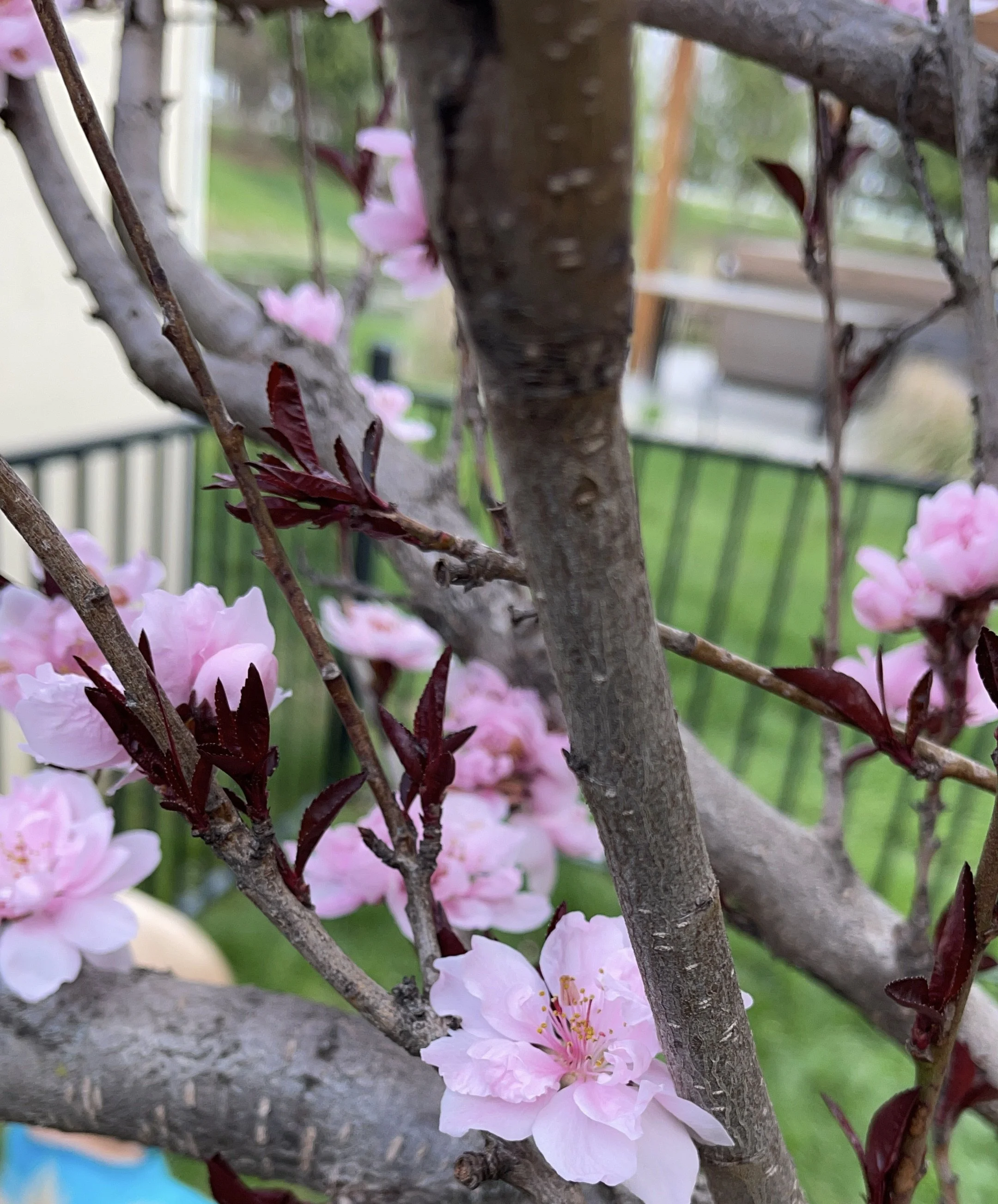
Resources
Websites
Order the content bundles, listen to the podcast, attend a conference, and read the books written by Wild + Free Founder and Author, Ainsley Arment. Her books and incredible conference encouraged and empowered me as a mom and home educator.
Take the 1,000 Hours Outside challenge, listen to the podcast, and read the book written by Author and Founder, Ginny Yurich. Take her advice, and watch it transform the atmosphere in your home!
Check out the wonderful world of FUNschooling! Sarah Janisse Brown is the Founder, Author and Illustrator of The Thinking Tree curriculum. She is a wealth of knowledge in all things homeschooling, specifically for creative and neurodivergent learners.
Podcasts
These podcasts have helped inspire our home education:
-
https://sallyclarkson.com/podcast
As a homeschooling pioneer, Sally Clarkson has great wisdom to share regarding faith, family, and home education. You will be inspired by her stories and encouragement!
-
https://www.durendawilson.com/podcast-1
If you want your spirit to feel revived, take time to listen to Durenda Wilson speak about her faith and family values. Her advice is realistic, relatable, and biblical.
-
Pam Barnhill has two great podcasts that include fabulous guests and links to resources:
https://pambarnhill.com/homeschool-better-together-podcast
AND
https://pambarnhill.com/category/ten-minutes-to-a-better-homeschool-podcast/
-
Dr. Kathy Koch and Celebrate Kids Inc. provide valuable faith-based content to encourage parents to focus on their child(ren)’s unique strengths and abilities!
https://celebratekids.com/podcasts
Dr. Kathy has written several books that are quick reads, each packed with a powerful message.
Books for Mom
Must-Read
Curriculum
This book by Gladys Hunt will teach you how to incorporate books into your family life and homeschool curriculum. It included an annotated list of books for ages 0-14. This is more of an educational tool for Mom/Teacher.
For a Literature-Based Approach:
This literature-based homeschool curriculum by Carrie Lambert Bozeman provides cross-curricular lessons to build on quality books featured in each lesson. Books are not included. Each activity will require some preparation in advance.
For Neurodivergent Learners:
We are currently working our way through the Dyslexia Games Curriculum. It is a therapy that uses puzzles and patterns to connect the right/left sides of the brain. My child absolutely loves the artwork in all of the Fun-Schooling books.
They offer books for picture-based thinking, speech therapy, and while they do not have specific workbooks to address dyslexia, their website notes that the reading curriculum has assisted children who struggle with phonics and spelling. We personally love their Music Curriculum; they offer almost every subject area and grade level!
We are currently using Horizons Math for our oldest child. For our youngest -Math and Phonics/Reading. So far, we love the simple quick lessons, without the added fluff. Great for neurodivergent kids who like to get straight to the point!
For Open & Go Lessons:
Scripture-Based Lessons:
We enjoyed this curriculum for Math last year, but due to some struggles with Reading/Writing, we were unable to use the Language Arts Curriculum on grade level. The Good and The Beautiful has the BEST Handwriting curriculum!
This curriculum offers a biblical viewpoint in every subject area. The Apologetics books teach students how to defend their faith with an evidenced-based approach. My family realized the storyline in the elementary level Math/Language Arts was a little too lengthy for learners who are always on-the-move.
Not Consumed has thought of everything … Kids Bible Studies, Kids Devotionals, and Homeschool Curriculum. They offer Consumer Math, Phonics/Reading, Writing, Music, Health/Physical Education, Homeschool Planners, and Journals for Middle & High School. Our family has loved every single Bible Study we have purchased!
Children’s Books
-
https://www.simonandschuster.com/series/Mia-Mayhem
These superhero themed books by Kara West are quick-to-read chapter books. Each story includes problems that Mia Mayhem has to solve, with the help of her friends!
-
https://aesopsfable.com/collections/owl-diaries
The Owl Diaries are a chapter book series for young girls. They are cute stories that highlight the importance of friendship, with cute illustrations on every page! Since they are so short, I would recommend borrowing from the library.
-
https://www.scholastic.com/site/branches/diary-of-a-pug.html
These adorable Diary of a Pug books are written and illustrated by Kyla May. Fun illustrations on every page, easy-to-read text, and hilarious content that will appeal to boys and girls.
-
https://www.zoeyandsassafras.com
These books written by former science teacher, Asia Citro, are full of scientific vocabulary. They also contain an element of magic, which adds to the mystery and excitement of each story!
INDEPENDENT READING OR READ TOGETHER
(Most of these are geared towards girls … please contact me to share some boy book recommendations, if you have them.)
-
The Phantom Tollbooth by Norton Juster is so cleverly written. My kids and I were on the edge of our seats wanting to know what twists and turns each chapter would bring. The extensive vocabulary provided learning opportunities (even for me). Chapter 10 had me in tears, and caused me to reflect on what heaven might be like. It is a classic that will make you laugh, and may even make you cry. The audiobook version read by Rainn Wilson, is fabulous!
-
The Miraculous Journey of Edward Tulane by Kate DiCamillo is one of my favorite stories. It evokes strong emotions as we consider love, loss, and personal growth, through the character development of a china rabbit, named Edward.
We listened to the audiobook version, free on the Libby app.
-
I have not yet introduced this book to my children, but Island of the Blue Dolphins by Scott O’Dell is truly inspiring. Its recommended audience is ages 8-11, but I enjoyed reading it for the first time as an adult.
THOUGHT-PROVOKING CHAPTER BOOKS
These chapter books will inspire adults and children, alike. They spark in-depth discussions, and provide opportunities to expand vocabulary. Our favorite way to get lost in a story, is to listen while painting, and sipping some afternoon tea.
READ-ALOUD CHAPTER BOOKS
I recommend you read these aloud to your child or listen on audiobook. Although they can absolutely be read independently, it’s important (and fun) to hear stories come alive, together as a family!
-
https://sites.prh.com/magic-tree-house
We are still working our way through this captivating book series! The audiobooks can be found for free, with a library card number, on the Libby app:
https://libbyapp.com/interview/welcome
The audiobooks are read by the Author, Mary Pope Osborne.
-
https://boxcarchildren.com/books/#multibook-b1d3
We are enjoying the audiobooks on the Libby app for free, with a library card number:
-
https://www.heartwoodhotel.com
There are only four books in this heartwarming series. My children loved hearing these cozy stories during our bedtime read-aloud.
-
https://www.beverlycleary.com/books/9780062455697/the-complete-ramona-collection
Another bedtime favorite for our family has been the Ramona books! We recently finished the collection, and have moved on to the Henry Huggins series. We LOVE all things written by Beverly Cleary!
-
https://littlehouseontheprairie.com
We are getting ready to tackle the Little House on the Prairie book series! These classic stories brought a sense of awe and wonder to my childhood. I’m looking forward to sharing them with my family.
READ-ALOUD PICTURE BOOKS/AUTHOR STUDIES
For a list of ideas, leveled by age, check out Sarah Mackenzie’s Read-Aloud Revival: https://readaloudrevival.com
-
Deborah Diesen and Dan Hanna have created the most adorable books with the best illustrations! All of the stories involve working through feelings and positive character development.
-
https://kevinhenkes.com/mouse-books/
Sheila Rae the Brave is one of our favorites, but all of the Mouse Books by Kevin Henkes are cleverly written and illustrated!
*I recommend doing an Author Study about Kevin Henkes, to add a Social Studies lesson to your reading time.
-
https://www.pigeonpresents.com
All of the Pigeon books and Elephant and Piggie books are fabulous! Mo Willems is one of my very favorite children’s author/illustrators. On his website, he teaches kids how to draw his characters.
*You can connect Art and Social Studies to your Reading lesson, by completing a Mo Willems Author Study!
What does our family’s home education look like?
We do not cover all of these subjects every single day. Sometimes, we do not even get to all of these activities weekly. It depends on how many extracurricular activities/field trips we have planned, and what topics hold my child(ren)’s interest. We pursue learning on our own time table, with the strength the LORD provides us each day.
To learn more about Home Education requirements for your state, check out the HSLDA.
-
I used to try to limit my daughter’s coloring time. It’s the only thing my little artist wanted to do! I would make her stop her creative process to get back to “important” school work. I have since learned that art is important work. Now our school days are filled with all the art we can create!
Colorful drawings in Student-Created Science Journals
Painted canvases proudly displayed on our art gallery wall(s).
Watercolor Journals - our favorites are by Emily Lex Studio!
Local Art Classes
-
My oldest child has always shown an interest in nature, so Science is a very important area of study for us. We have tried pre-made curriculum, such as TGATB Bird Study and Marine Biology Unit. Those studies were educational, but we have found that making our own science journals, is best practice for our family. We have completed and/or are currently working on the following journals:
Tree Journal
Flower Journal
Bird Journal
Insect Journal
Reptile/Amphibian Journal
Fish Journal
Mammal Journal
We learn facts about each journal entry, while my daughter draws. Often, we find informative YouTube videos to enrich the learning. We pair our journaling with Social Studies (see next tab for details).
In addition to journals, we focus on Farm Study in person with local farmer(s), who offer homeschool classes and/or field trips. On the farm, we study:
Gardening (in addition to growing our own garden at home)
Beekeeping
Goats
Chickens
Cows
Horses (at a different farm, during horseback riding lessons)
4-H Involvement - Farm Study and an opportunity to focus on Fine Arts.
-
We have learned facts about each state across the U.S.A., such as the state tree, flower, bird … etc. We mark our progress on a dry erase wall map as we identify state facts, which we also record in our science journals. We recommend using wet erase or permanent markers so that your map will not smudge as you add each new fact. We also love our placemat coloring book of each of the United States of America. It includes several facts and details to color.
It is a great way to combine more than one subject, and build on our prior knowledge. For this one activity, we are learning science, map study, writing, reading, and art! Sometimes I even throw in a little music, as we jam out to songs that include given state names or facts; such as, California Love by 2Pac ft. Dr. Dre (radio edit of course)!
-
Both of our kids are currently using the Horizons Math curriculum for their grade level. In addition to learning the material in the book, we continue to learn and review using hands-on math manipulatives, such as:
We also practice math skills when we are grocery shopping, using a measuring tape to work on our dollhouse project, or baking cookies from scratch using measuring cups and spoons. Meaningful learning happens in real life. No math book story problem could ever be as memorable as spending time in the garage with Dad or whipping up a new recipe with Mom. Make math real for your kids, by showing them how you need those skills each day.
-
Language Arts is embedded into every subject we learn. We used to stick with a curriculum for Phonics and Reading. When I realized our child needed a different approach to reading instruction, I had to get more creative.
Journaling
Pen-Pal Letters
Audiobooks (See list of our recommendations)
Read-Alouds every night before bed
Leveled readers of interest for independent practice (We like books about animals and superheroes).
Regular trips to the library, so they can pick out all the books they enjoy!
Try to minimize worksheets, and instead incorporate living books - which is a term used in the Charlotte Mason style of teaching.
-
I have paired these two subjects, because often, studying scripture will lead us to listen to worship songs and hymns that go along with the lesson.
BIBLE:
The best curriculum that we have found for Bible Study is Not Consumed.
They offer Kids Bible Studies, Homeschool Curriculum, and Kids Devotionals. Every book we have purchased has been fabulous!
We use The Clear Focus Bible for Kids (NIrV) to allow for more independent reading of the text.
MUSIC:
We do not focus on music every school day, but typically a few days out of the week are spent reviewing Solfege scales, with hand signals. We then work on a page or two in some very old curriculum that a former homeschooling family passed on to us: Beginning in Music. It is simple and easy to use! The same company that sells Rod & Staff curriculum, Milestone Books, also offers a variety of other subjects, for all grade levels and abilities.
Keep it SIMPLE! Short and sweet lessons and activities are key for young learners. Follow your child’s lead on how long they can focus on a given task, and plan your school time accordingly. Sing songs to learn days of the week and months of the year, do science experiments, and play outside whenever possible. Allow your child to experience the love of learning right from the start! Here are some of our current recommendations:
Kindergarten
-
My son is enjoying Horizons Math and Phonics lessons. The content is simple and straight to the point. This allows us to move quickly through the worksheet, so we can enrich the lesson with other activities. This option may get pricey if your goal is to use the books every day, for every subject level.
The Grooved Learning Handwriting workbooks have been helpful for our Kindergartener. He prefers to use permanent marker pens, instead of the provided erasable ink.
When my oldest was in Kindergarten, we used Simply K and Level K Math by Masterbooks. I will say that it is text heavy for the person teaching the lesson. Our child did not have the attention span to listen to each story provided.
-
The Fidget Game has learning games for all ages! We really enjoy playing Word Pop and Squishy Time Rescue, but I want to buy them all. They are fun for kids and adults alike, and promote cooperative play.
We also enjoy playing Sequence for Kids as a family to help with shapes, animals, and strategy building.
For a cooperative game that does not involve any competition, Count Your Chickens is so much fun!
-
We have learned the importance of limiting screen time. Educational apps can be helpful tools, but should not be a replacement for in-person parent-led instruction.
Reading.com is our favorite learning app! Several aspects of the lesson will require an adult to facilitate. The content is totally geared toward the age and reading level of each child.
We have also enjoyed ABCmouse for some enriching educational content.
Khan Academy Kids is another fun option that is completely FREE!


